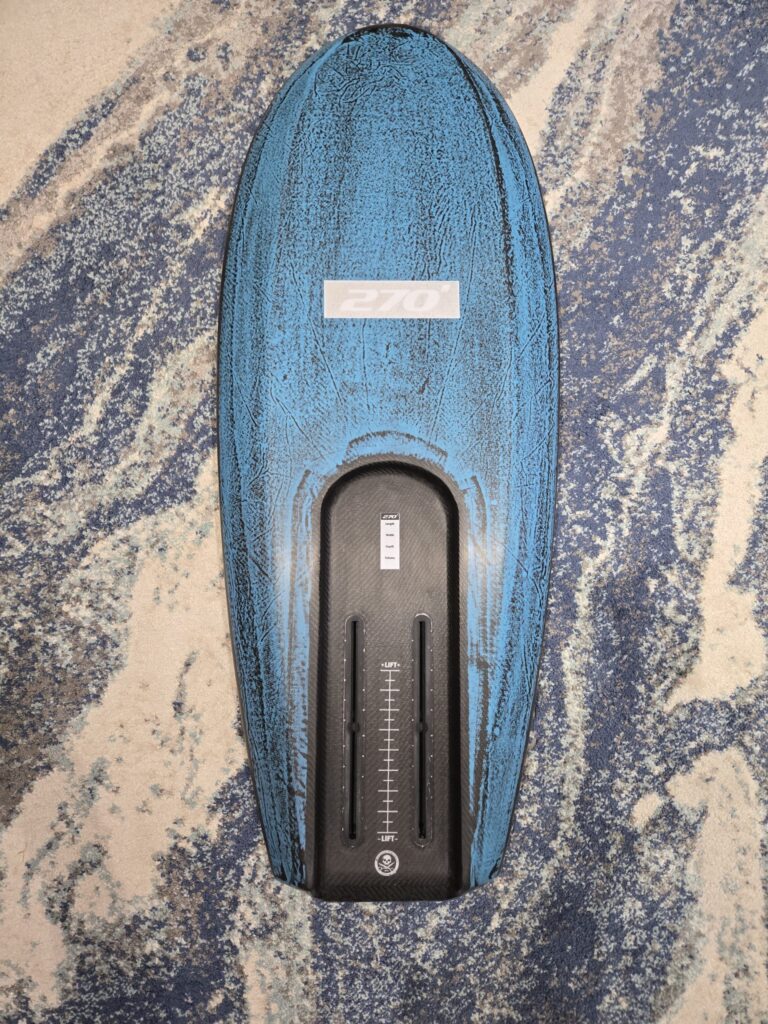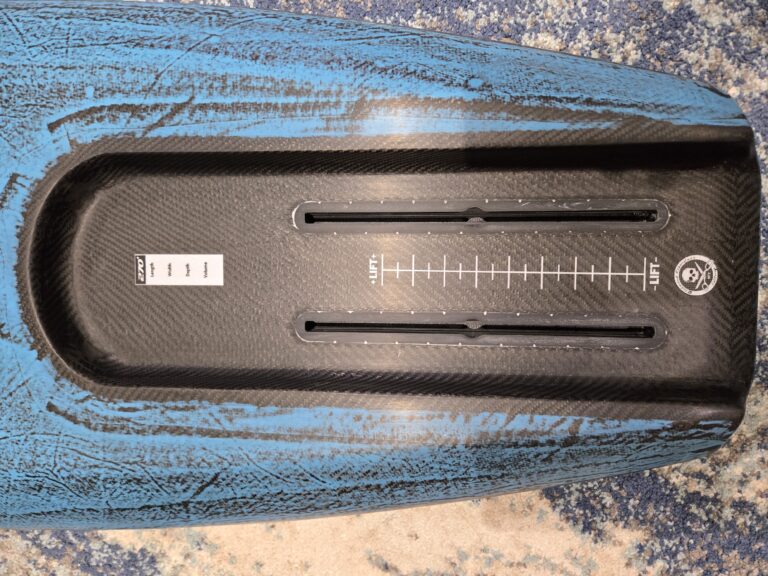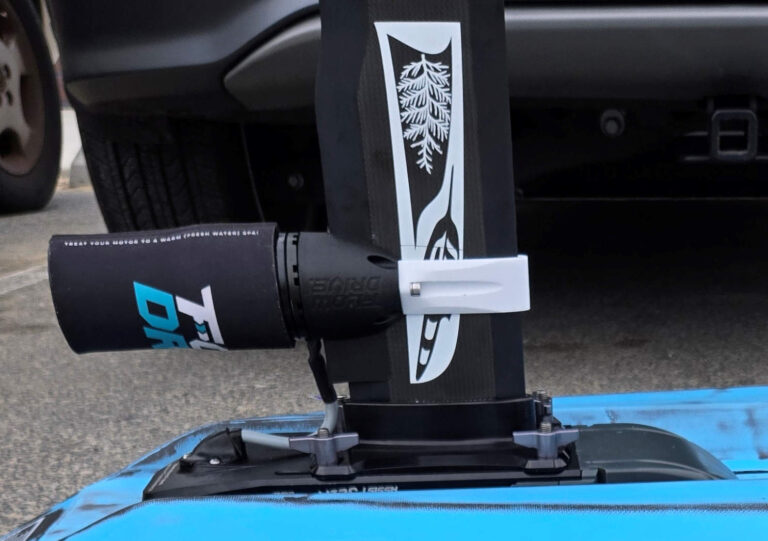270* Trench Board Review

I am always hesitant to write about a Foil Board. There are a thousand different designs, and each board may fit one person better. I am here to tell you that I know better and that this board is the only good board out there…. Just kidding.
I am here to tell you about the 270-degree Foil Drive-specific board with a trench. It is not about the width, length, or even the volume. This is about the basic design and build. I have been designing foil boards with some trench in them for about seven years now. I initially did a design like this on my Freedom Foil Board. The idea was to put the foil closer to one’s back foot to get a better feel for the board. I felt it was a better board than the flat bottom one, but it did not catch on.
The Foil Drive came out, and I bought one. I did not want to put it on the deck of my board, so I set out to design a board that had it in the deck. This presented many challenges, and Dave at King’s Paddle Sports worked with me to refine it. I went through quite a few boards and leaks before we developed a great system and design. At that point, Foil Drive released its second-generation system, which made my efforts obsolete.
I could use the new Gen2 system on any board, so I was excited to go back to my old boards and use the system. I noticed right away that paddling was tedious with the extra drag of the unit on the bottom of the board. I also noticed that during the takeoff, if I let up on the throttle, the board would dramatically slow down. My old system did not do that as much since the pod was the only added drag.

Thus, I pondered my old idea of a trench to hide the unit from the water flow. I discussed this with Grant, who created 270-degree foil boards. He was all in on experimenting with a new design. We started down the rabbit hole to see what we could come up with.
You might think it is just a cutout in the bottom of the board. Well, yes and no. There are subtle things that must be altered to keep the board balanced. I will not get into the secret sauce, but we have worked through them and come up with a formula that works.
Lastly, you must know how to strengthen and properly build the board. The trench is not the easiest thing to incorporate without adding a lot of weight to the board. I am not a board builder. Grant spent much time with others to find the lightest, but strongest version possible. My latest board is just as light as any other board of I have ever had. I have been using it for six months now with my Foil Drive, three to five sessions a week, and it is just as light and watertight as when I first got it.
I am sure some think it does not matter if the unit is hidden since it has a motor. There are several reasons why it makes a difference. Please keep in mind that I am firmly against the practice of motoring around with the board just out of the water and the propeller slapping in and out of the water. I use this as a boost to get into a swell or wave and assist with paddling.
First and foremost is the takeoff. During the takeoff, I routinely back off on the throttle. I match the speed of the board with the push of the wave. The trench allows me to do this. The unit is a massive drag on the underside of the board. When it is brought in line with the bottom of the board, this drag is greatly reduced. I can feel the difference in just paddling the board without the motor. During takeoff, if I let the throttle off the board, it will continue to glide. The pod still has some drag, but I have also reduced that with a Flow custom adapter. I experimented with securing a plexiglass sheet to the board to cover the trench in front of the unit. This made the board almost feel like a non-foil drive board during a takeoff and paddling.

Secondly, the trench brings the base of your foil exactly in line with the rest of the bottom of the board. The thinner the board, the more sensitive it feels under your feet. If you add two inches between you and the baseplate of your foil, you are decreasing the feel and changing the leverage point of the foil wing itself. Now, if you like an 82cm mast length versus a 78cm one, then not using a trench with a 78cm mast makes sense. I like my 78cm mast, so the extra length on a regular board threw the dynamics off for me. The trench solved that issue.
Lastly, the weight distribution is better. It is like the weight is inside the board, right under your feet. This is the most neutral place to have the weight for turning and pumping.
The Foil Drive-specific trench board design is an improvement over a standard design. It improves the board’s hydrodynamics, enhances its balance and feel more like a non-motorized version, and helps with weight distribution. Grant, with 270-degree boards, makes an amazingly strong but light version.

